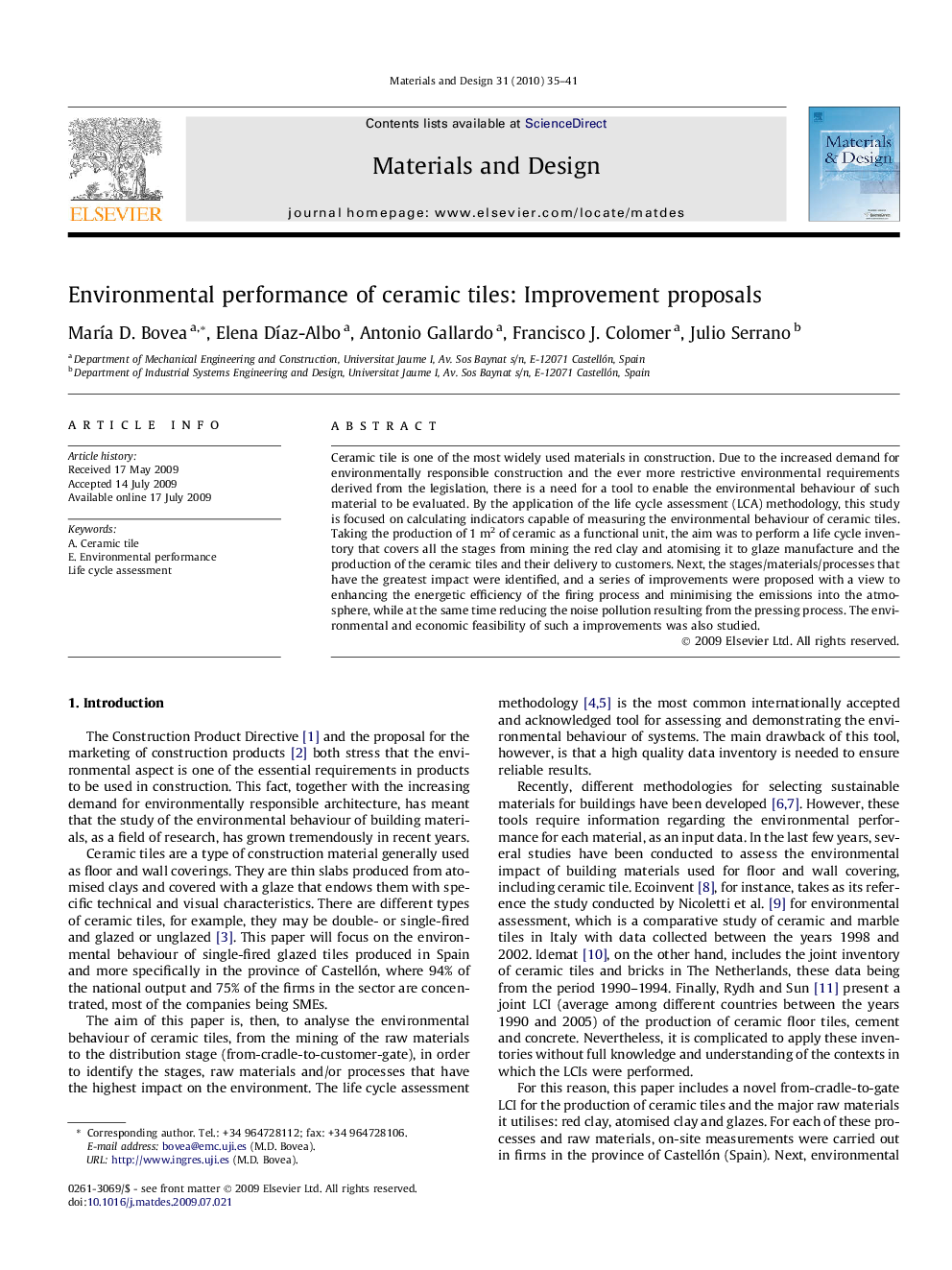| Article ID | Journal | Published Year | Pages | File Type |
|---|---|---|---|---|
| 832269 | Materials & Design (1980-2015) | 2010 | 7 Pages |
Ceramic tile is one of the most widely used materials in construction. Due to the increased demand for environmentally responsible construction and the ever more restrictive environmental requirements derived from the legislation, there is a need for a tool to enable the environmental behaviour of such material to be evaluated. By the application of the life cycle assessment (LCA) methodology, this study is focused on calculating indicators capable of measuring the environmental behaviour of ceramic tiles. Taking the production of 1 m2 of ceramic as a functional unit, the aim was to perform a life cycle inventory that covers all the stages from mining the red clay and atomising it to glaze manufacture and the production of the ceramic tiles and their delivery to customers. Next, the stages/materials/processes that have the greatest impact were identified, and a series of improvements were proposed with a view to enhancing the energetic efficiency of the firing process and minimising the emissions into the atmosphere, while at the same time reducing the noise pollution resulting from the pressing process. The environmental and economic feasibility of such a improvements was also studied.
